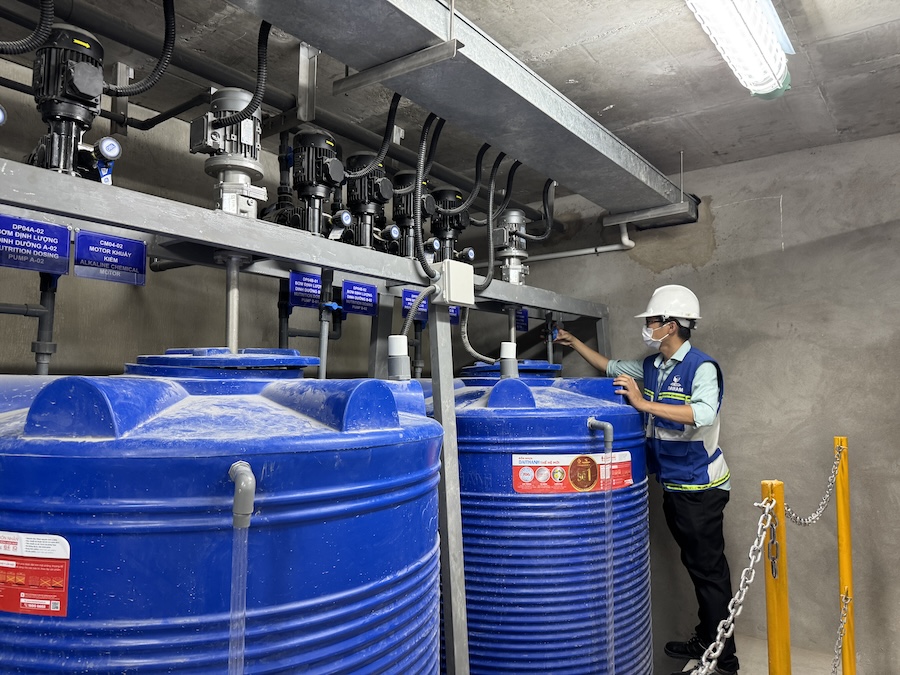In recent years, the operating costs of wastewater treatment systems have increased by an average of 15–30%, mainly due to fluctuations in electricity prices, chemical costs, and maintenance expenses. This poses growing financial pressure on many businesses, especially in manufacturing and industrial zones. Many systems today consume significant resources without delivering proportional treatment efficiency, and may even risk violating environmental regulations if not optimized. So, is there a way to reduce WWTS operating costs while still ensuring effluent quality? The following article analyzes the causes, feasibility, and practical solutions to help businesses save money while operating more effectively each month.
1. Why is it necessary to reduce WWTS operating costs?
The operating cost of a wastewater treatment system is a major expense for factories, industrial zones, or businesses. These costs include electricity, chemicals, labor, equipment maintenance, sludge treatment, and treated effluent management. If not well controlled, costs can escalate significantly—especially in large-scale or continuously operating systems. In the context of rising electricity prices and input materials, cost-saving becomes essential to protect business profits.
A more critical risk is when WWTS consumes a large budget, but treatment performance does not improve—or even declines due to poor operation or lack of maintenance. This not only leads to waste but also increases the risk of effluent violations, affecting a company's reputation and legal standing. Conversely, if costs are optimized properly, businesses not only save monthly budgets but also extend equipment lifespan, increase treatment efficiency, and move closer to sustainable development goals.

Optimizing operating costs helps protect business budgets
2. Is it possible to reduce WWTS operating costs?
Reducing the operating costs of WWTS is entirely feasible if businesses apply optimization solutions scientifically. In reality, many systems operate wastefully due to underutilized equipment, improper chemical usage, or inefficient labor allocation. By automating processes, adjusting wastewater flow by time, using inverters to save electricity, or reusing healthy biological sludge, facilities can reduce costs by 10–30% while still ensuring effluent meets environmental standards.
However, uncontrolled cost-cutting can backfire. For example, arbitrarily reducing chemicals, shortening aeration time, or running equipment below design capacity can weaken microbial health, result in non-compliant treated water, or cause system blockages. Therefore, the key principle is “optimization”—that is, reviewing and adjusting operations based on actual data—instead of “cutting costs at all costs.” The right approach will ensure effective, stable, and long-term system operation.
3. Summary of Optimization Solutions for Operating Costs
3.1 Optimize Operational Processes
Automating processes through PLC or SCADA systems helps reduce labor dependency, increase operational accuracy, and shorten response times during incidents. Moreover, automated systems allow remote control and send alerts during abnormal conditions, thereby saving time and maintenance costs.
Additionally, adjusting wastewater flow between peak and off-peak hours helps maintain stable operations, avoiding shock loads that consume more electricity and chemicals. Routine maintenance of equipment such as pumps, blowers, and sensors is also critical to prevent unexpected breakdowns that lead to costly repairs.
3.2 Reduce Chemical Usage
One effective cost-saving method is to use automatic chemical dosing systems. These devices ensure chemicals are precisely injected according to wastewater flow and quality, avoiding overuse or insufficient dosing that compromises treatment efficiency.
Moreover, facilities should prioritize high-efficiency or eco-friendly chemicals that reduce dosage while minimizing sludge generation. In biological systems, reusing healthy sludge from older systems reduces the cost of new sludge and improves process stability.

Use dosing pump skids for precise and economical chemical injection.
3.3 Optimize Energy Consumption
Blowers are the most power-consuming equipment in WWTS. Replacing them with energy-efficient models equipped with inverters that adjust airflow based on real-time oxygen demand can lead to significant savings. Additionally, scheduling operations during off-peak electricity hours is a smart strategy to cut monthly power bills.
Equipment like pumps, mixers, and aerators should be scheduled properly to avoid idle operation or unnecessary overcapacity. These fine-tunings help reduce equipment wear and energy consumption.
3.4 Enhance Human Resource Management
Labor costs may not be as high as electricity or chemicals, but they directly affect system performance. Periodic training for operators on technical skills, procedures, safety, and energy-saving methods helps minimize operational errors and reduce resource waste.
Detailed, transparent, and verifiable operational logs are the foundation for timely monitoring, evaluation, and adjustments. At the same time, assigning shifts based on flow loads also helps save manpower while maintaining quality operations.
3.5 Utilize Recycled Resources
Treated wastewater that meets standards can be reused for non-critical purposes such as irrigation, floor washing, or cooling equipment—reducing the need for clean water, which is not a minor operating cost.
If sludge from the system meets safety criteria, it can be processed into compost for agricultural use—helping reduce sludge treatment costs and even creating an additional income stream. In anaerobic systems, collected biogas can be reused for cooking, lighting, or on-site power generation.

Operate a professional wastewater treatment system with Dai Nam - save costs and meet waste discharge standards
Reducing WWTS operating costs is an entirely achievable goal if businesses take the right approach—through scientific and sustainable optimization, not reckless cutbacks. From automation, chemical control, and energy savings to human resource enhancement and resource recovery, all contribute to efficient operation while meeting environmental standards. More importantly, well-managed costs form a strategic foundation for businesses to maintain competitiveness and achieve long-term growth.


